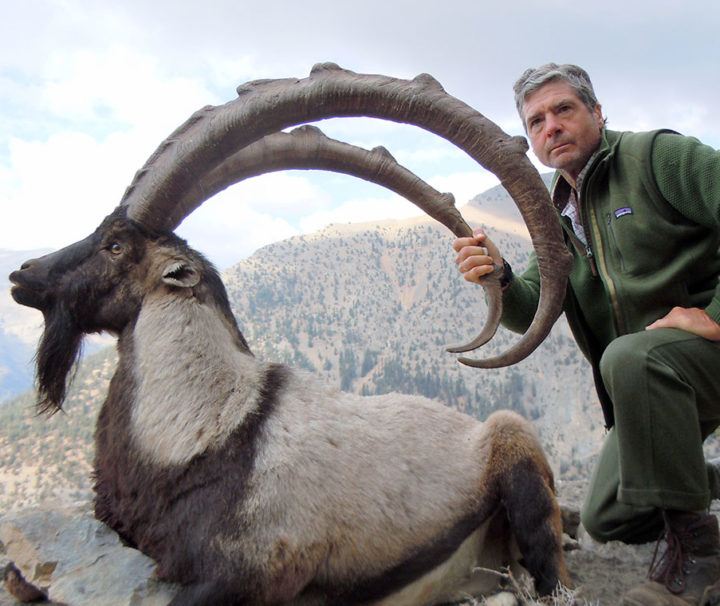Editorial on Trophy Hunting in Gilgit Baltistan
In the heart of Pakistan’s majestic Karakoram Range, nestled within Gilgit-Baltistan (GB), a recent trophy hunting expedition has ignited a familiar debate: can the pursuit of a prized trophy truly bolster conservation efforts while supporting local communities? An American hunter’s successful bid of $181,000 for a permit to hunt the iconic Astore markhor – a wild goat with magnificent spiraling horns – highlights the intricate dance between economics and ecology.
Trophy hunting, despite its controversial nature, has the potential to be a powerful tool for conservation when meticulously managed. In GB, the strategy is clear: a significant portion of these exorbitant hunting fees directly fuels community development projects – schools, healthcare clinics, and infrastructure emerge from these hunts. This model cleverly ties the wellbeing of the markhor to the wellbeing of the people. After all, well-supported communities are more likely to become champions of wildlife conservation in their backyard.


Trophy Hunting Facts: Did you know?
The Astore markhor (Capra falconeri cashmirensis) is a subspecies of markhor and is Pakistan’s national animal. Markhors are renowned for their agility and ability to navigate perilous, near-vertical cliffs with astonishing ease.
Yet, trophy hunting inevitably raises ethical questions. Can the thrill of the hunt truly be justified when an endangered creature is the target? As responsible travelers and global citizens, we must carefully weigh the economic benefits against the moral implications, ensuring that the pursuit of financial gain doesn’t lead to irreversible ecological damage.
Pakistan offers a potential blueprint for balancing conservation and communities. By investing heavily in the people who live alongside wildlife, the trophy hunting program aims to cultivate a sense of ownership and a genuine desire to protect endangered species. However, careful regulation, vigilant monitoring, and transparency are essential to ensure that noble conservation goals remain at the forefront.
The Bottom Line:
Pakistan, with its breathtaking landscapes and unique wildlife, must be a responsible steward of its natural treasures. Sustainable tourism models, such as Gilgit-Baltistan’s carefully managed trophy hunting, offer a nuanced path forward – but only if community empowerment and conservation ethics remain inviolable guiding principles.
If you would like to delve deeper into this topic, the full story of the American hunter’s trophy hunt in Gilgit-Baltistan can be found on Dawn.com.


Interesting Facts about Trophy Hunting in GB
- Community Conservation: Up to 80% of the revenue generated from trophy hunting permits is directly invested in community development projects in GB, creating a vested interest in wildlife conservation for local people.
- Hunting for the Old: Trophy hunting programs specifically target older males within the population, those past their prime breeding years. This allows younger males to take their place, contributing to the overall health of the herd.
- A History of Success: Trophy hunting in GB has been credited with a remarkable comeback for several species, including the Astor markhor and the Himalayan ibex. Populations of these animals have rebounded significantly thanks to conservation efforts tied to regulated hunting.
- Not Just the Markhor: While the Astore markhor attracts significant attention, trophy hunting programs in GB also target other species like the Himalayan ibex, the blue sheep, and the Sindh ibex.
- Strict Quotas: The number of hunting permits issued each year is strictly limited and based on scientific wildlife population surveys. This ensures sustainable hunting practices.
- Global Participation: Trophy hunters from all over the world, including the United States, Europe, and the Middle East, participate in GB’s program, contributing to the local economy.
- The Economic Impact: Trophy hunting is a significant source of revenue for remote communities in GB, creating jobs and supporting local businesses.
- Anti-Poaching Measures: Revenue from trophy hunting also supports anti-poaching efforts, further protecting endangered species within the region.
- Beyond the Hunt: Many trophy hunters are avid nature enthusiasts who also contribute to ecotourism and other sustainable initiatives during their visits to GB.
- A Model for Debate: The successes and challenges of GB’s trophy hunting program provide a valuable case study for other regions worldwide seeking to balance conservation and economic development.
Why does Gilgit-Baltistan allow trophy hunting?
Gilgit-Baltistan allows trophy hunting as part of a conservation strategy that involves local communities and focuses on sustainable hunting practices. This approach aims to preserve biodiversity while providing economic benefits to the local population.
What is trophy hunting in GB?
Trophy hunting in Gilgit-Baltistan involves regulated hunting of certain species, under strict guidelines and quotas, to ensure sustainable wildlife management and to support conservation efforts.
Is trophy hunting legal in Pakistan?
Yes, trophy hunting is legal in Pakistan, including in Gilgit-Baltistan, within a framework that ensures sustainable practices and contributes to conservation efforts and community development.
How much is Markhor hunting in Gilgit-Baltistan?
The cost of Markhor hunting in Gilgit-Baltistan can be substantial, reflecting the rarity and conservation value of the species. Prices can vary significantly based on various factors including conservation efforts and demand.


One thought on “Editorial: Navigating the Complex Terrain of Trophy Hunting in Gilgit-Baltistan”